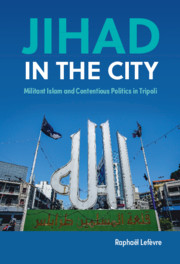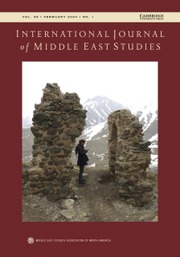Islam, Literature and Society in Mongol Anatolia
Part of Cambridge Studies in Islamic Civilization
- Author: A. C. S. Peacock, University of St Andrews, Scotland
- Date Published: November 2020
- availability: Available
- format: Paperback
- isbn: 9781108713481
Paperback
Other available formats:
Hardback, eBook
Looking for an inspection copy?
This title is not currently available on inspection
-
From a Christian, Greek- and Armenian-speaking land to a predominantly Muslim and Turkish speaking one, the Islamisation of medieval Anatolia would lay the groundwork for the emergence of the Ottoman Empire as a world power and ultimately the modern Republic of Turkey. Bringing together previously unpublished sources in Arabic, Persian and Turkish, Peacock offers a new understanding of the crucial but neglected period in Anatolian history, that of Mongol domination, between c. 1240 and 1380. This represents a decisive phase in the process of Islamisation, with the popularisation of Sufism and the development of new forms of literature to spread Islam. This book integrates the study of Anatolia with that of the broader Islamic world, shedding new light on this crucial turning point in the history of the Middle East.
Read more- Analyses literature, religion and society during a crucial yet neglected period in Anatolian history, that of Mongol domination in the thirteenth and fourteenth centuries
- Contributes to new understanding of the emergence of the Ottoman Empire and ultimately the modern Republic of Turkey by marking a decisive phase in the process of the Islamisation of medieval Anatolia
- Brings together sources in Arabic, Persian and Turkish to integrate the study of Anatolia with that of the broader Islamic world
Reviews & endorsements
'This rich and meticulously researched monograph at last treats Mongol Anatolia in the 13th–14th centuries as a vibrant and multi-faceted society in its own right. The particular originality of the book lies in its analysis of the literary texts being written and read in this period, many previously unknown and still in manuscript, which throw light on the processes of Islamization.' Charles Melville, University of Cambridge
See more reviews'The most thorough and perceptive study ever published of the decades of Mongol rule in Anatolia. Based on primary sources, many of which have hardly been used by earlier scholars, it throws a flood of light on the process of Islamisation in what would ultimately become Turkey.' David O. Morgan, University of Wisconsin-Madison
'Deploys a depth and variety of source materials and novelty of approach to the study of religious, political, and linguistic change in Mongol Anatolia. Its conclusions differ startlingly from most scholarship on the subject, setting off reverberations that will be felt in scholarly circles far and wide.' Scott Redford, SOAS, University of London
'Peacock has written an erudite, meticulously researched, and insightful work drawing on fascinating new material from rarely used sources. Tackling a wide array of topics from Sufism, vernacular religious literature to apocalyptic thought, this is a major contribution not only to the growing body of work on medieval Anatolia but also to Islamic studies.' Sara Nur Yildiz, Max Planck Institute for the History of Science
'This gripping book is set in one of the darkest periods of Soviet history, the last years of Stalin. Using declassified materials Slaveski vividly shows how remaking Ukraine after the German occupation and the Red Army's defeat of the Wehrmacht was accompanied by corruption, violence and for many destitution. The result, as his brilliant analysis demonstrates, was incessant conflict between central and local authorities. The legacy of the chaotic post-war years is both an historical and contemporary phenomenon. This book is an invaluable contribution to understanding modern Ukraine.' John Barber, University of Cambridge
'This fascinating story of ordinary people fighting back successfully against Stalinist officialdom is an example of how scholars can draw larger implications from local studies. Filip Slaveski's important book offers a fresh approach to Stalinist economy and society. It changes our understanding of Soviet history after World War II by restoring agency to the lowly villagers and revealing the social tensions missed by previous historians.' Serhy Yekelchyk, University of Victoria
Customer reviews
Not yet reviewed
Be the first to review
Review was not posted due to profanity
×Product details
- Date Published: November 2020
- format: Paperback
- isbn: 9781108713481
- length: 323 pages
- dimensions: 229 x 152 x 17 mm
- weight: 0.436kg
- availability: Available
Table of Contents
Introduction
Part I. Religion, Politics and Society:
1. The formation of Islamic Anatolia: crises of legitimacy and the struggle against unbelief
2. Sufism and political power
3. Sufism in society: Futuwwa in Seljuq and Mongol Anatolia
Part II. Literature and Religious Change:
4. The emergence of literary Turkish
5. Vernacular religious literature: tales of conversion, eschatology and unbelief
6. Apocalyptic thought and the political elite
Conclusion
Bibliography
Index.
Sorry, this resource is locked
Please register or sign in to request access. If you are having problems accessing these resources please email [email protected]
Register Sign in» Proceed
You are now leaving the Cambridge University Press website. Your eBook purchase and download will be completed by our partner www.ebooks.com. Please see the permission section of the www.ebooks.com catalogue page for details of the print & copy limits on our eBooks.
Continue ×Are you sure you want to delete your account?
This cannot be undone.
Thank you for your feedback which will help us improve our service.
If you requested a response, we will make sure to get back to you shortly.
×



